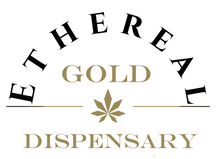We were originally going to call this COA blog "How Your Cannabinoid Manufacturers Are Putting Your Life at Risk to Save $600", but we had to change the title so Google would make it easier for people to find. This blog will teach you how to read a certificate of analysis, what exactly that is, and then the sad truth of how product manufacturers are putting your life at risk to save $600.
What is a Certificate of Analysis (COA)?
A Certificate of Analysis (COA) is one of the most important tools you, as a consumer, have at your disposal. They are reports issued by third-party labs that test each batch of a hemp (cannabis) product that manufacturers send in.
These reports test for things like:
- Cannabinoids (Potency of the cannabis)
- Terpenes (Flavors of the cannabis)
- Microbial Contaminants
- Heavy Metals
- Residual Solvents
- Pesticides
- Mycotoxins
All of those are incredibly important to test for. That is why we, at Ethereal Gold Dispensary, require all of our products to have full panel COAs which include all of the above. It's incredibly important to know what you are putting in (or not putting in) your body. These COAs protect you from incredibly harmful ingredients/factors which can literally kill you. Unfortunately, the only federally regulated component of a COA is the cannabinoids page — and even then, only the THC level. More specifically, federal law states that THC levels must be at 0.3% or lower for a product to be considered hemp, and not be regulated as marijuana.
Note: While federal law states that THC levels must be 0.3% of lower to be considered a hemp product, some state programs determine hemp status by only delta-9-THC. This can cause further complications that we will go over later in this article.
If COAs Give Us So Much Protection, Why Don't All Manufacturers Do Full Panel Ones?
There's an easy answer to this: It costs (roughly) an extra $600 per batch of product tested, and some manufacturers value their money over your life. This sounds like an exaggeration — it is not. They are saying that extra $600 per SKU tested is worth more than knowing if the batch has been tainted by microbials, heavy metals, extremely dangerous solvents, pesticides, and mycotoxins. They are saying that $600 is worth more than knowing if something extremely dangerous has gotten into the product that's detectable.
There are other things that manufacturers can cut corners on to save additional money for themselves too. Have you ever seen a COA that doesn't have a QR code? That's because the state of California taxes the product at a higher rate if it has a QR code. Have you ever wondered how a product is so cheap? Manufacturers can/do import hemp products from overseas, and it's legitimately difficult to tell what's in those or if they've been laced with anything.
How to Spot a Fraudulent Certificate of Analysis (COA)
Even if a manufacturer is presenting a COA to you, that also doesn't mean that they haven't modified it, changed values, or are hiding something. These are fraudulent COAs, and these are some of the ways our Handlers spot them:
- Verify the COA Has a QR Code: QR codes are (generally) hard to tamper with. If the COA has a QR code, scan it using the app on your phone. If the COA does not have a QR code, go to the lab's website and contact them for a copy of the COA. All labs will provide this and are happy to, because it's also their reputation on the line if one of their client's misrepresents their results.
- Check Where the COA is Hosted: Once you scan the QR code, it should take you to the lab's document library directly to that COA. If it does not, be extremely cautious. You should be especially wary of Google Drive links or links that go directly to the manufacturer's website because the scanned COA you're looking at could still be tampered with. As with step one, if you cannot get the scan to take you to the lab's report of the COA, contact the lab and they will send you a copy.
-
Review the COA for Anything Out of the Ordinary: At Ethereal Gold Dispensary, we have seen a lot of shady things in COAs. Many people will use snipping tools, Adobe Acrobat to edit a PDF, Photoshop, and more to move/change/hide results and items. Here are some of the easier things to verify:
- Is the COA full panel? If the COA only tests for potency, you know immediately that they either value $600 more than your safety or they are hiding something and have omitted the other pages
- Is the Name on the COA Correct? If the name on the COA appears cut off or altered, you can tell immediately that something has been done to the COA. Also be sure to keep an eye out for different font styles/sizes, column and row items not aligning, crease lines, and shadows.
- How Many Pages Is This COA? If the COA says there's five pages, and you have two, something is likely going on (but not always). You may have to check with the lab on why this is for the original copy. Some labs include the bill in that page count to the manufacturer, which can be confusing. Alternatively, if there's more pages than the COA says there are, you're likely looking at multiple documents spliced together. (This is not always bad, but we'll explain in the next bullet point)
- Did They Actually Test the End Product Full Panel? If a manufacturer has a ton of SKUs, you may find that they have only tested the distillate for full panel, while the end product was tested for potency. This is not necessarily a bad thing. However, the distillate testing COA and the end product testing COA should be linked in some manner. It's also incredibly preferential if the lab is able to prove that they used that distillate then, but if not, make sure your trust the manufacturer. The worst thing you can do is take someone at their word on their testing (if it's not the lab).
- Are the Percentages Correct? Double check to make sure that no values have been edited or changed. Even then if they have not, double check and make sure that the Total THC (typically defined as Delta-9 THC added to 87.7% of THCa) is not over 0.3%; if it is, the product is not federally legal (but may be legal in some states).
- Confirm the Testing Date is Recent: The testing date should be along the top of the COA. Some people will use old results for new products, or even change the date to make it appear current. If the result is over a year or two old, we highly recommend checking with the lab. You may find that distillate dates are older than two years if they're linked (depending on how much the manufacturer purchased). This is unusual, but we have seen it happen. If the product is a valid one, Ethereal Gold Dispensary requires manufacturers retest that distillate to ensure it is as potent and safe as when it was created.
- Ensure Your PDF Is An Original Document: Foremost, if you receive a COA that's not a PDF — run. Otherwise, remember, COAs should never be copied or scanned.
- Make Sure the Photo and Product Description Match: If it's meant to be a COA for a piece of chocolate, but there's a photo of a green gummy you know you've got an issue.
- Watch Out For Giant White Boxes: Some manufacturers will block off sections of their COA if they get test results they do not like. These are extremely obvious.
Even More Specific Things You Can Watch Out For
While using the above steps, here are some more specifics that can help you determine if a COA is fraudulent or misleading.

- Double Check the Limit of Quantifications (LOQs): The LOQ is the lowest concentration of a substance that the lab will test down to, which is usually defined in parts to billion or parts per million. If any of the test results state ND (none detected) or 0%, it may mean that the amount is under the lab’s LOQ. The document should also state what the LOQ is. Some dubious COAs will have LOQs as high as 0.5% for THC, which is well above the federal legal limit.
- Double Check That There's a Batch # and What The Testing Size Is: This is not determined by the lab, but by to producer of the product. In addition, there is no Federal standard regarding how often a producer needs to test or how much, and batch numbers aren’t even in a requirement in all states. However, having these on a COA shows that the producer takes quality and compliance seriously.
- Make Sure This Isn't a State Only Legal Product: Some states only require testing for Delta-9 THC, and not THCa. This leads some manufacturers to make products with extremely high THCa values, and saying that they're compliant with federal law. However, roughly 87.7% of THCa should be converted and added to THC value to comply with federal law.
Are You Still Unsure If Your COA is Valid?
No worries! Our Handlers are here to help you be safe. Just click on the chat bubble in the bottom right and select "I'd like to vet a non-EGD product". Our Handlers will take a look at the product (or ask for more information). This will include reviewing the COA, calling the lab that tested it, and more.
The Handler that looks at it will then tell you if they have any concerns about it (or not), if they'd personally take it (and why or why not). If the product is legitimate, we will tell you. Our goal is not to push our product to you over a legitimate product you may have. We just want people to be safe.
Otherwise, if you want to pick products that have valid COAs without the hassle, never forget that all items at the Ethereal Gold Dispensary have full panel COAs. You can review them at any time by clicking the "Lab Reports" button on all of our product pages.








